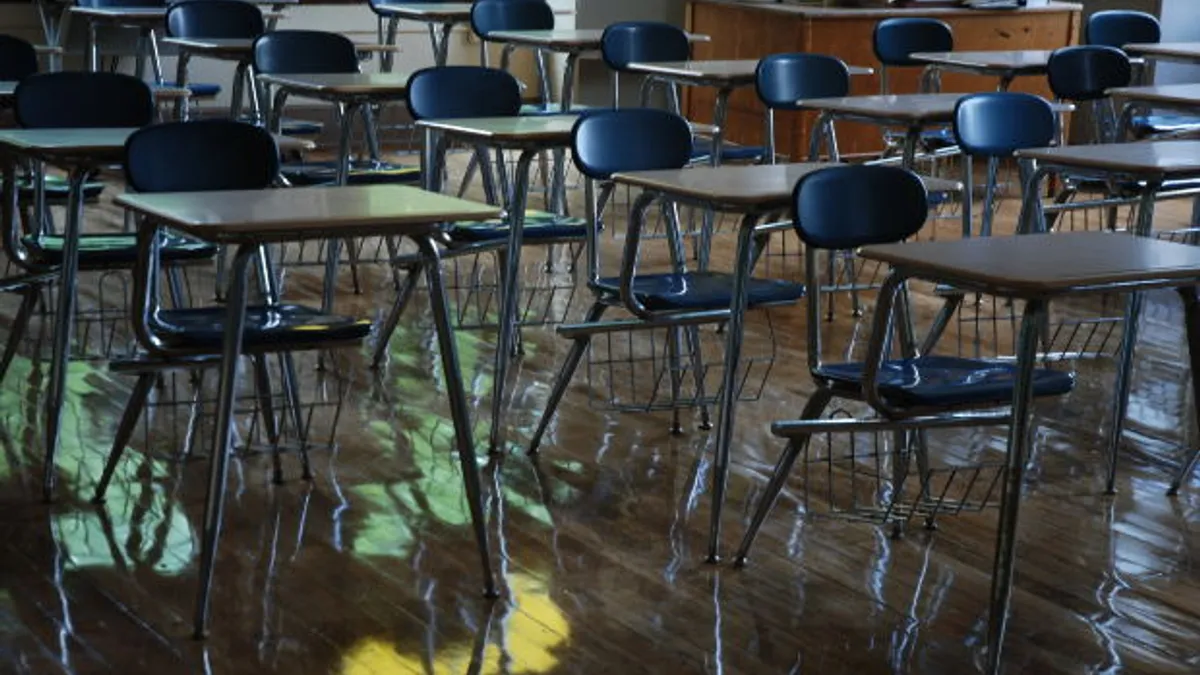Dive Brief:
-
In an attempt to combat chronic absenteeism – which, in turn, affects student achievement and school dropout rates – the Orleans Parish School Board is starting a “Keeping Kids in School” initiative in partnership with community leaders, NOLA.com reports.
-
In the 2017-18 school year, almost a quarter of the district's 48,000 students missed 15 or more days of class, or more than 10% of the school year, for various reasons – the school board cited poverty, juvenile arrests and lack of access to social services as some of the factors affecting attendance – indicating a continuation of a trend that has emerged in the city in recent years.
- As a part of the newly-launched initiative, more than 30 community members and officials from businesses, nonprofits and the mayor's office committed to efforts to improve school attendance, including mentoring at-risk students, offering incentives for regular attendance, and not serving students during school hours, NOLA.com notes.
Dive Insight:
Across the country, chronic absenteeism has been deemed a crisis in education, according to a recent document released by the U.S. Department of Education. While educators and school administrators are working to make improvements to school programs, acquire more educational technology and revamp curriculum, these changes have little impact if students are not in the classroom consistently enough to benefit from them. And this absenteeism, experts say, not only affects student achievement and graduation rates, but it can also set students up for failure in adulthood.
As school districts delve into absenteeism data, numerous reasons emerge to account for this growing trend, though these issues vary in relevance from one community to another. In addition to student health and mental health concerns, housing instability is a growing factor and is the largest predictor of chronic absenteeism, according to a recent study. The opioid crisis is also having a growing impact, as more parents deal with the issue and some students are affected as well. In addition, some absenteeism results from school bullying or from embarrassment, because of things like students not having access to clean clothes.
States and communities are approaching the problem in various ways. Some are using state-funded coaches to work with students who tend to have repeated absences. Others are addressing practical issues by providing laundry facilities at schools. The community school model is also gaining ground in the face of the crisis by offering health care in schools to lessen time spent out of class. Other schools are working to engage students more actively and create a more positive school culture while enlisting the aid of community nonprofits in the process. Online toolkits, such as the one promoted by California Sen. Kamala Harris during her time as the state's attorney general, offer more possible solutions.
However, school leaders need to carefully consider the consequences of implementing certain strategies. For instance, urging merchants to report all children who are in stores during school hours may not work in communities with a significant number of homeschooled students. And offering large incentives for perfect attendance may backfire if students come to school sick in quest of the prize and spread germs to other students and teachers in the process. While the issue needs to be addressed with community input and support, school staff and administrators need to look at all sides of the problem before putting new policies in place.







 Dive Awards
Dive Awards






